Mexican Raccoon
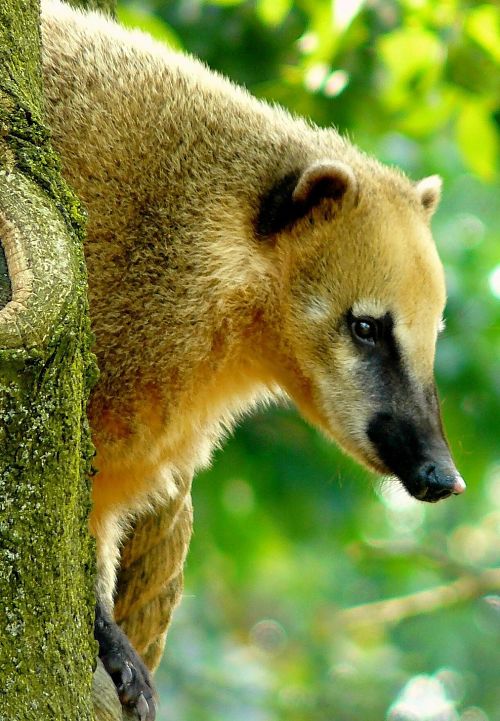 Portrait of a Coati
Portrait of a CoatiOne of the coolest Mexican raccoon facts is that they are known as "snookum bears" among a host of other names, but the technical term for this adorable animal is coati, or coatimundi.
There are four species of coati, the South American, found in both Central and South America, the eastern mountain, found in Venezuela, the western mountain, found in Ecuador and Columbia, and finally the white-nosed coatimundi.
The white-nosed coati is the species most often referred to as a Mexican racoon, because it ranges across Central America Mexico and the South Western United States
Mexican raccoons are highly intelligent animals about the size of a very big house cat.
They have mask-like coloration on the face, and rings around their tails, and are members of the family procyonidae, along with raccoons, kinkajous and ring-tailed cats.
They live in very active groups of up to forty individuals, and spend most of their time foraging on the ground, although they nest and sleep in trees.
They are highly social, playful and affectionate with eachother, and keep in contact with a variety of whistles, squeals, chatters and snorts.
Mexican raccoons have remarkably long noses that are very flexible. The tip of the snout can actually bend from side to side at nearly 90 degrees.
They use their powerful, long front claws and pig-like snout to root out insects, reptiles and just about anything else edible that they can find in the ground.
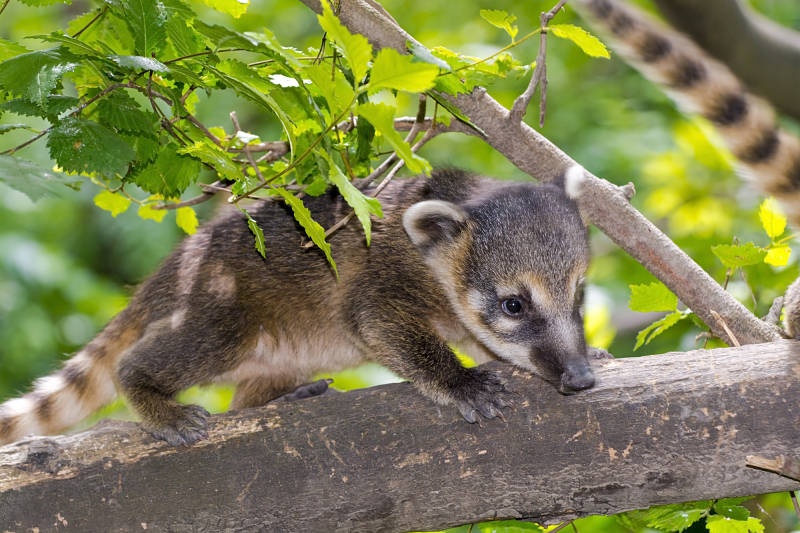
The Mexican raccoon, or white-nosed coati, is about 12 inches at the shoulder, and weighs between 5 and 20 pounds.
The South American coati is very slightly smaller and may be reddish in color. The snout is darker in color, and they may not have any rings on their tails.
Both the mountain species of coati are smaller still, more like a squirrel, ranging from 3 to 10 pounds. They have well-defined masks and ringed tails.
All the species are foragers who will eat virtually anything from fruits and vegetables to fish and small birds.
Insects are a staple, since they hunt mostly on the ground, rutting with their nose, and will consume slugs, beetles, worms and crickets too.
Invertebrates such as tarantulas and scorpions are on the menu also, and coatis seem to be immune to their bites and stings.
The Mexican raccoon is occasionally kept as a pet, and may be very affectionate and playful.
They are extremely intelligent and curious, and can be trained to use a litter pan, so there is a temptation to give them the run of the house.
But don't forget these busy animals have a powerful urge to dig, since that's how they acquire their food in the wild, and they may cause quite a bit of damage in the average home, pulling up floor tiles and carpeting.
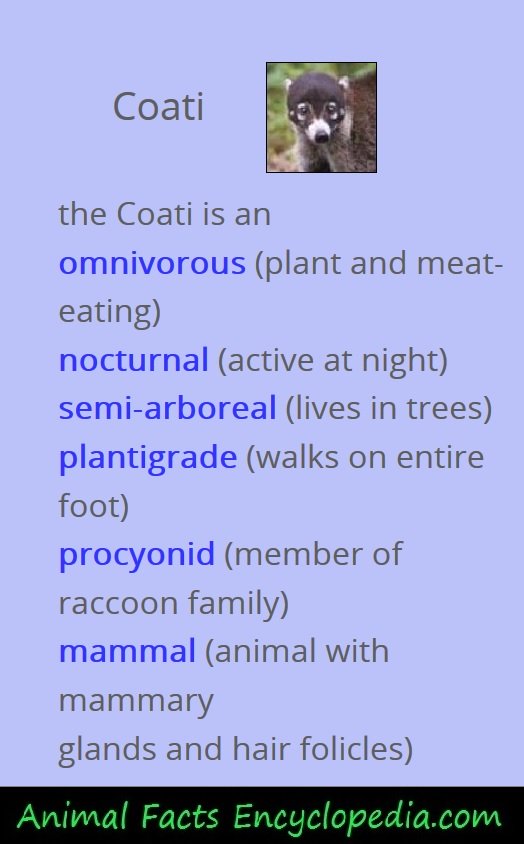
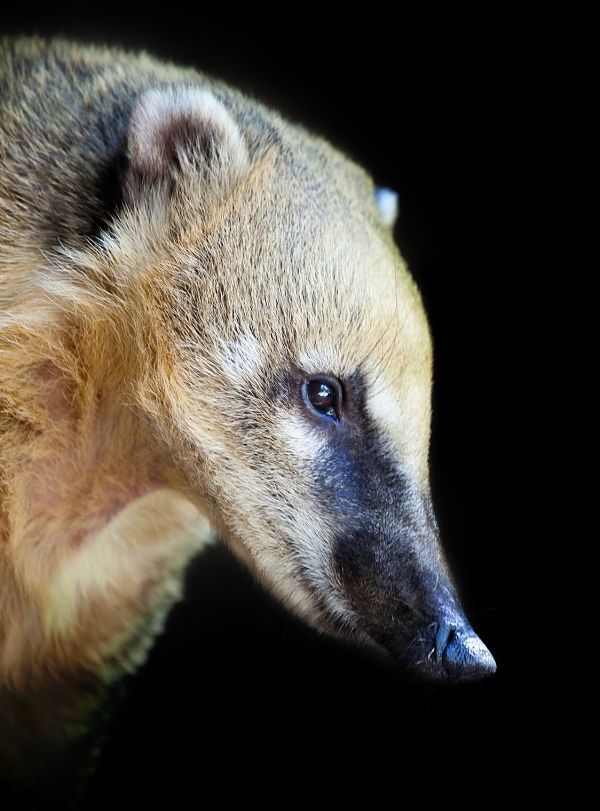


a few more Mexican Raccoon facts
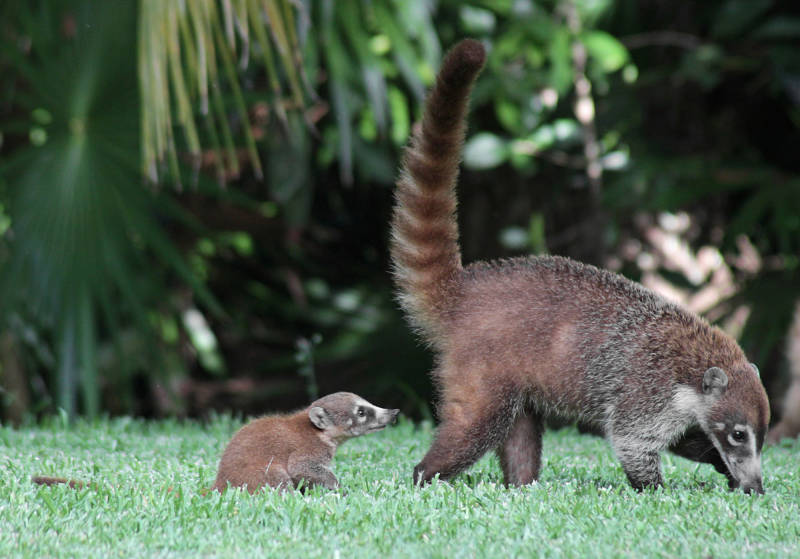
- The Mexican raccoon is formally known as the coati
- There are four species of coati
- The Mexican raccoon is the species known as the white-nosed coati
- Coatimundi, quati, tejon and hog-nosed coon are some other names
- Tarantulas are a common part of the diet of a coati
- Coatis are members of the raccoon, or procyonid family
see more animal extreme closeups
Recent Articles
-
African Animals - Animal Facts Encyclopedia
Oct 11, 16 10:27 PM
African Animals facts photos and videos..Africa is a wonderland for animal lovers, and a schoolroom for anyone who wants to learn about nature, beauty and the rhythm of life -
Baboon Facts - Animal Facts Encyclopedia
Oct 11, 16 10:26 PM
Baboon facts, photos, videos and information - Baboons are very distinctive looking monkeys with long, dog-like snouts and close set eyes. -
Great Apes Facts - Animal Facts Encyclopedia
Oct 11, 16 10:25 PM
Great apes facts, photos and videos..Human beings did not evolve from chimpanzees, modern chimps and gorillas do not appear in the fossil records until much more recently than homo sapiens..























